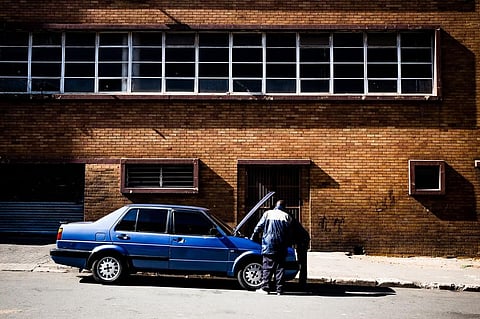
- Home
- न्यूजग्राम
- NewsGram USA
- India
- World
- Politics
- Entertainment
- Culture
- Lifestyle
- Economy
- Sports
- Sp. Coverage
- Misc.
- NewsGram Exclusive
- Jobs / Internships

You are heading to somewhere important. You get in the car, turn the ignition, but the engine doesn't crank. Your heart sinks because not only are you getting late but now you also have a problem to deal with.
There are three main components responsible for starting up the car. If one of them goes bad, you'd have to hitch a ride unless you have a mechanic on call. In case it's an emergency, always reach the helpline or roadside assistance to get to a safer place where you or a professional can diagnose the problem.
However, if your car is sitting on the driveway, and you are wondering why it won't start, we've got the answers.
Follow NewsGram on LinkedIn to know what's happening around the world.
If your battery is more than 4 years old, chances are you will have to buy a new one because the older one probably has run its course. The best way to identify a dead battery is to test it using a multimeter. Place the positive probe on the positive terminal and negative probe on the negative terminal of the battery.
If your battery is more than 4 years old, chances are you will have to buy a new one. Pexels
A fully charged battery should read 12 volts or above. If it's below 12 volts, you have got trouble. You will need to charge the battery using the charger or jumpstart and let the engine run on idle for 15 minutes until the battery is fully charged.
Don't have a multimeter? Well, you can still diagnose the problem by paying attention to how your car responds when you turn the ignition. If you hear a rapid clicking sound, the battery may have become low due to the headlight or the music system left on overnight. Sometimes cleaning the battery terminals using an anti-corrosion solution solves the problem. Also, make sure the connections are snug tight.
In case you hear a click, or there's dead silence, you might want to look somewhere else.
What are the symptoms of a bad alternator? Your dashboard battery light might be on, the engine cranks slowly, and you might hear a squeaking or rumbling noise from the alternator.
Also, you might notice the dashboard and interior lights dimming down while driving.
These signs indicate that the alternator is likely to be at fault. To be 100% sure, you can carry out a simple test using your good-ol' multimeter. However, you will need to charge your battery to the max to ensure the accuracy of this test.
Connect your multimeter to the battery terminal and it should read somewhere around 12.6 volts. Pixabay
Connect your multimeter to the battery terminal and note the reading. It should read somewhere around 12.6 volts. Now crank the engine and note the reading. If the alternator were working, the reading would shoot higher up to 14.4 volts. But if it remains stable or drops below 12.6, then your alternator is not working.
Any other method to test the alternator? For most of you who don't have a multimeter at this moment, you can let your car idle with headlights on. If the battery drains out, it's a clear indication of a bad alternator. But this shouldn't bother you as you can look up a low price car alternator source on the Internet and get your car running again.
Your battery is fine, and the alternator is charging adequately, but the car won't start — it's the starter motor that needs to be serviced, repaired or replaced. Sometimes, the starter motor absorbs the engine heat and struggles to start up. If your engine cranks up cold but drags when it's hot, it's the starter motor at fault.
In that case, you will need to replace the starter. To prolong the life of your new starter, consider installing a heat shield to keep the excess engine heat at bay.
(Disclaimer: The article is sponsored, and hence promotes some commercial links.)
